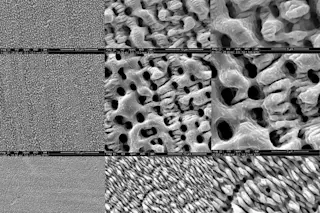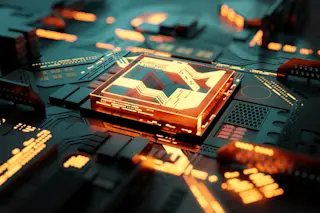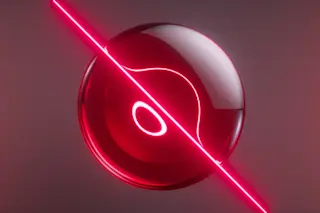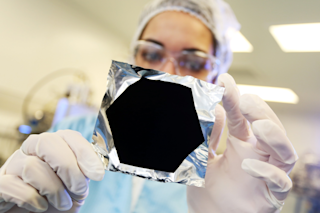This picture may look like an exuberant patchwork quilt, or a stretch of really interesting farmland as seen from an airplane. In fact, what you're looking at is sheet of graphene--a one-atom-thick layer of carbon, measuring about 100,000 atoms across. The image, produced by an electron microscope, reveals that the honeycomb-like lattice of carbon atoms that forms a sheet of graphene is full of irregularities. Each sheet is composed of patches of atoms, and each patch has a slightly different rotation than that of its neighbors. By firing electrons at a sheet and using different colors to identify the angles at which the electrons bounced back, researchers made this rainbow image of a graphene sheet with the patch boundaries clearly shown. Lead researcher David Muller says this is an easy and efficient way to understand a graphene sheet's properties.
"You don't want to look at the whole quilt by counting ...













